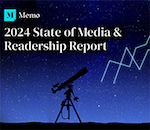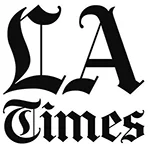 |
| Donald Baer |
Meredith Corporation has elected former BCW global chair Donald Baer, lead independent director on the company’s board of directors. Baer, who is now CEO of Palisades Strategic Advisors, was CEO and worldwide chair at Burson-Marsteller before it merged with Cohn & Wolfe in 2018. He also served as White House director of strategic planning and communication and chief speechwriter during the Clinton administration. In its fiscal 2020 second-quarter earnings call on Feb. 7, Meredith reported $811 million in revenues, down from $878 million in the prior-year period. The company has also recently shed Family Circle, Money and Martha Stewart Weddings from its stable of magazines and has reimagined several others as quarterly publications. In his new role, Baer will collaborate with chairman Steve Lacy, vice chairman Mell Meredith and president and CEO Tom Harty on setting agendas for board meetings, facilitate discussions among the independent directors outside of board meetings, and provide advice and counsel to the board.
 |
| Terry Jimenez |
Just days after taking over as chief executive of Tribune Publishing, Terry Jimenez has already begun swinging the cost-cutting ax. According to a report in the New York Post, execs being shown the door include SVP of sales and strategy Susan Jacobs, VP of strategy marketing Mark Rose, VP of creative and strategy Robin Gruen, VP of business optimization Chris Duplex and chief digital operations officer Grant Whitmore, who was formerly publisher of the New York Daily News. The departures come on the heels of the Jan. 13 announcement of voluntary buyouts for staffers with more than eight years of service. Hedge fund Alden Capital Partners is now the company’s largest single shareholder, controlling 32 percent of its common stock.
 |
Television still reigned this year as the dominant platform choice for people who watched the Super Bowl. In the Seton Hall Sports Poll, conducted Feb. 3-5, 92 percent of respondents said that they took in the game on television, with four percent watching on their computer, three percent on multiple screens and just one percent on their phones. TV viewers accounted for 98 percent of the big game’s audience in 2016. When asked what part of the broadcast was their favorite, 65 percent said the game itself (down from 72 percent in 2016), with 19 percent opting for the halftime show (up from 13 percent) and 12 percent picking the commercials (up from seven percent). As to how effective those commercials were in getting their messages across, only 17 percent said that a commercial aired during the game made them want to purchase the product advertised. The Seton Hall Sports Poll is sponsored by the Sharkey Institute within Seton Hall University’s Stillman School of Business.


 Trump Media & Technology Group today reported a $58.2M net loss on $4.1M in 2023 revenues, a disclosure that drove its stock price down 22.6 percent to $47.96.
Trump Media & Technology Group today reported a $58.2M net loss on $4.1M in 2023 revenues, a disclosure that drove its stock price down 22.6 percent to $47.96. Barry Pollack, an attorney at Wall Street’s Harris St. Laurent & Wechsler, has registered Julian Assange as a client with the Justice Dept. “out of an abundance of caution.”
Barry Pollack, an attorney at Wall Street’s Harris St. Laurent & Wechsler, has registered Julian Assange as a client with the Justice Dept. “out of an abundance of caution.” Paramount Global to slash 800 jobs in what chief executive Bob Bakish calls part of an effort to “return the company to earnings growth"... Rolling Stone editor-in-chief Noah Shachtman is exiting at the end of the month due to disagreements with chief executive Gus Wenner over the direction the magazine is taking... The New York Times broke the $1 billion barrier in annual revenue from digital subscriptions in 2023... Press Forward is investing more than $500 million to strengthen local newsrooms.
Paramount Global to slash 800 jobs in what chief executive Bob Bakish calls part of an effort to “return the company to earnings growth"... Rolling Stone editor-in-chief Noah Shachtman is exiting at the end of the month due to disagreements with chief executive Gus Wenner over the direction the magazine is taking... The New York Times broke the $1 billion barrier in annual revenue from digital subscriptions in 2023... Press Forward is investing more than $500 million to strengthen local newsrooms. The majority of news articles are read within the first three days of publication, according to a recent report.
The majority of news articles are read within the first three days of publication, according to a recent report. The Los Angeles Times gives pink slips to 115 people or 20 percent of its newsroom staff... TIME is also laying off about 30 employees, which is approximately 15 percent of its editorial staff... The Baltimore Banner, which was launched by Stewart Bainum in 2022 after he failed to buy the Baltimore Sun, added 500 subscribers per day in the three days following Sinclair Broadcast Group's deal to purchase the Sun.
The Los Angeles Times gives pink slips to 115 people or 20 percent of its newsroom staff... TIME is also laying off about 30 employees, which is approximately 15 percent of its editorial staff... The Baltimore Banner, which was launched by Stewart Bainum in 2022 after he failed to buy the Baltimore Sun, added 500 subscribers per day in the three days following Sinclair Broadcast Group's deal to purchase the Sun.


 Have a comment? Send it to
Have a comment? Send it to 
No comments have been submitted for this story yet.